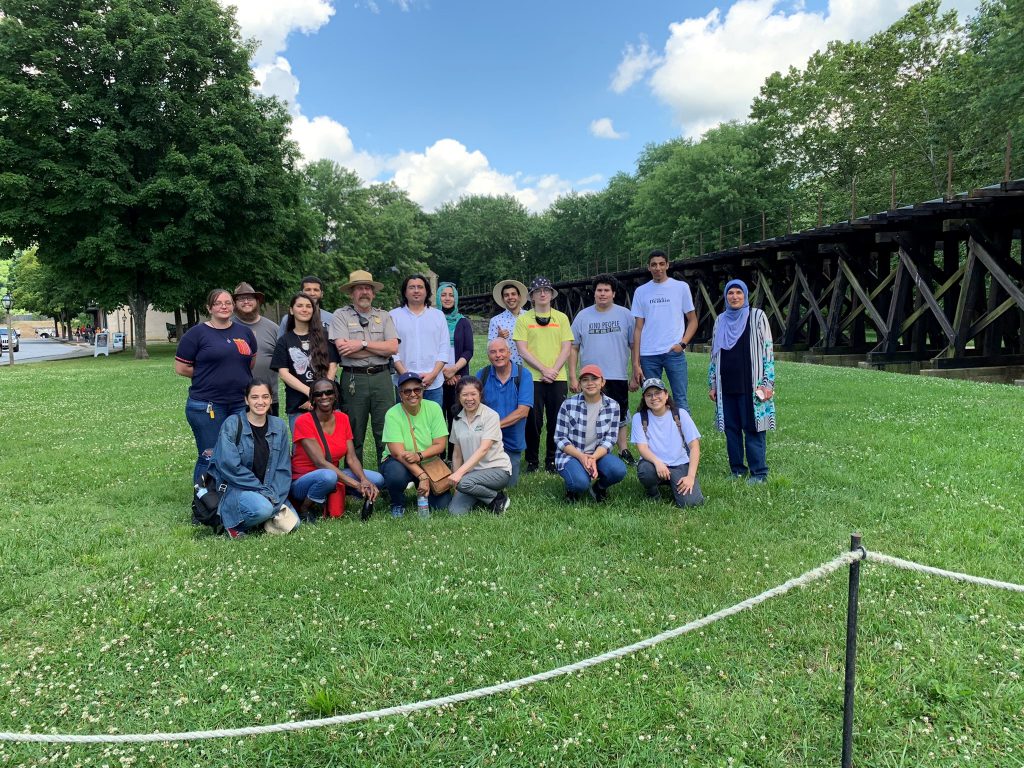Dr. Jimmie McClellan Leads Tour of Scenic Mountains and Rivers and Discusses Their Rich Histories
NOVA students, staff and faculty took to the rivers—Monocacy, Potomac and Shenandoah—on June 24 during an annual summer history bus tour sponsored by the Alexandria Campus LASS Division.
Traversing through Virginia, Maryland and West Virginia, the tour consisted of visits to the Chesapeake and Ohio (C&O) Canal Museum at Great Falls, the Monocacy Aqueduct and Harpers Ferry. Historian and Dean Dr. Jimmie McClellan captivated the group as tour guide.
Observing the canal, aqueduct and waterway gave the group a close look at the key conduits for infrastructure, trade and transportation. Led by President John Quincy Adams, from about 1828 to 1924, the C&O Canal served as the primary (but not the only) mode of transporting coal, flour, grain, stone, iron, whiskey and tobacco. Getting to the Ohio River Valley for commerce and ties to the western frontier inspired the innovation of the canal system.
After a gorgeous view of Great Falls, the next stop was the Monocacy Aqueduct, the largest structure on the C&O Canal. In addition to the canal locks seen at Great Falls, the aqueducts were also a vital part of the model and engineering design to create effective passages (a bridge) to maintain a stable water channel. In times of peace and war, this also proved to be an essential passageway. But we learned that it was much more than an aspect of necessary construction; for the stonemasons, they were crafting a ‘work of art.’
Heading to Harpers Ferry in West Virginia, also along the C&O Canal, we passed some of Maryland’s scenic byways, like Sugar Loaf Mountain, and discussed the American Civil War, as these areas served as strategic locations for battles. The Antietam Campaign is regarded as the deadliest day of the Civil War. This visit was a fitting prelude to not only the culmination of the tour, but also Harpers Ferry is home to John Brown’s Raid to end enslavement and regarded as a major precursor to the Civil War. The John Brown Museum at Storer College—one of the first HBCUs—and Brown’s Fort, which preserved the struggle and pursuit for freedom and racial equality, were among key sites of the visit.
The group was also able to see a Scottish-style wedding procession. But these sites weren’t the only breathtaking aspects of the exploration.; group members broke a sweat hiking and climbing up the mountains behind Dean McClellan. The picturesque view of Harpers Ferry and the confluence of the Shenandoah and Potomac rivers certainly made the mission worthwhile!
For more information on future programs and activities, contact Mohamed Ali at mmali@nvcc.edu.

Submitted by:
Mohamad Ali, AL-Ed. Support Spec., MAli@nvcc.edu
